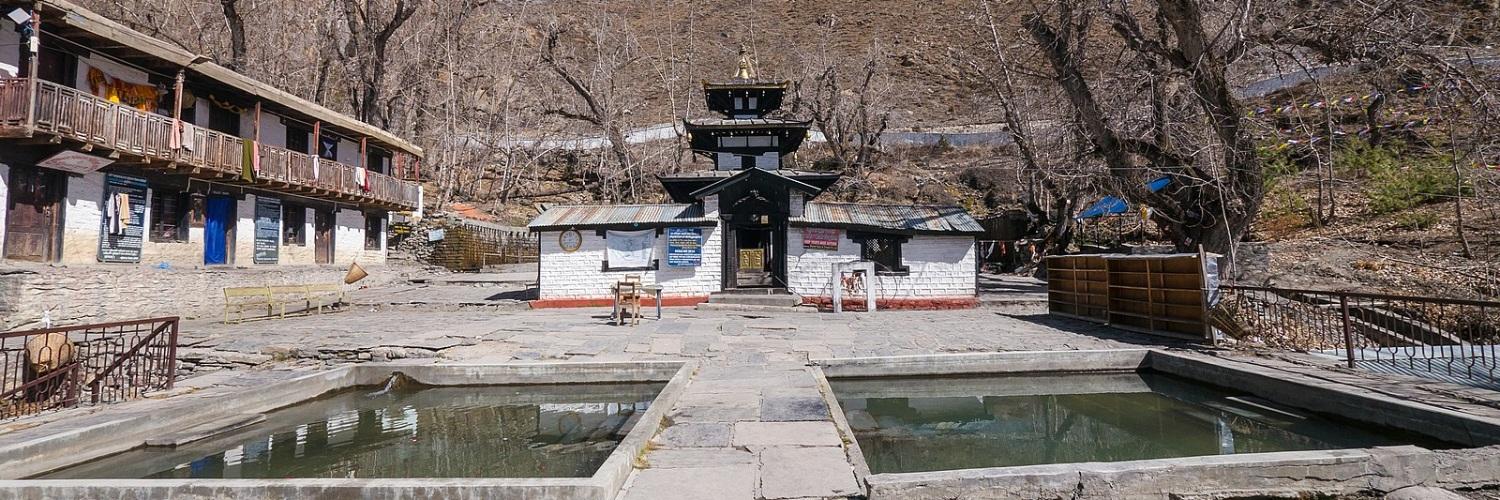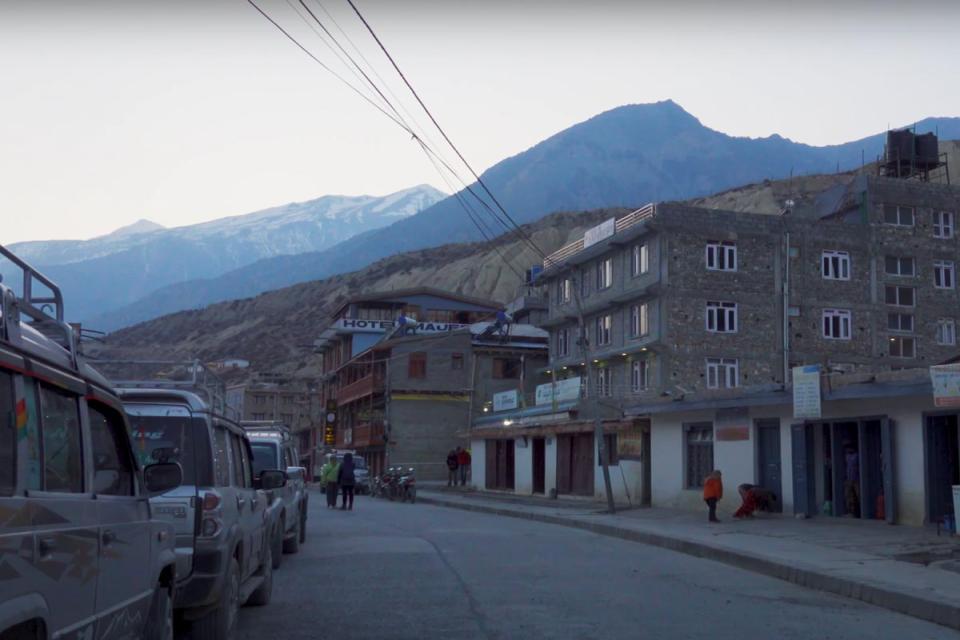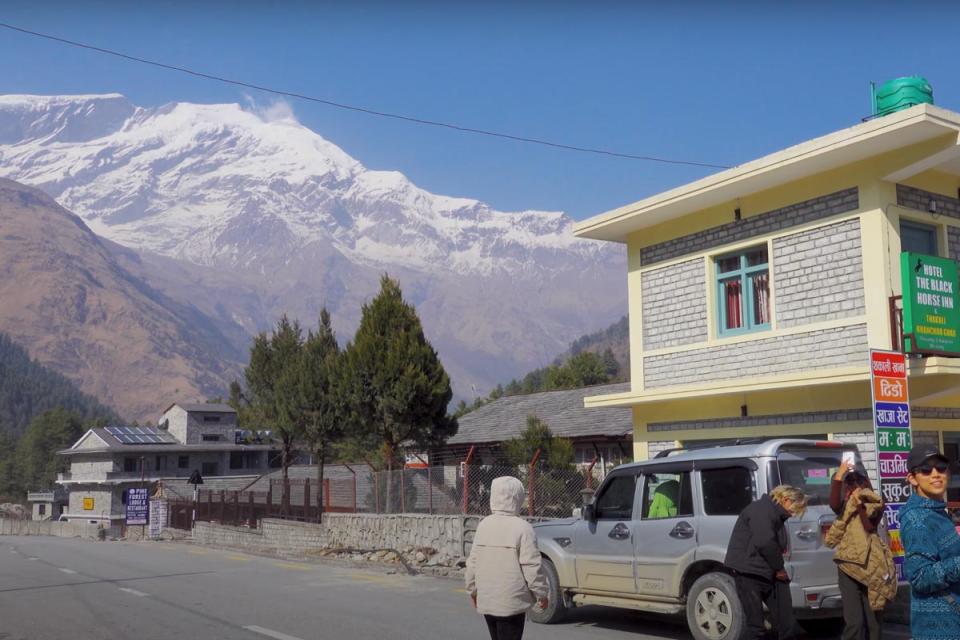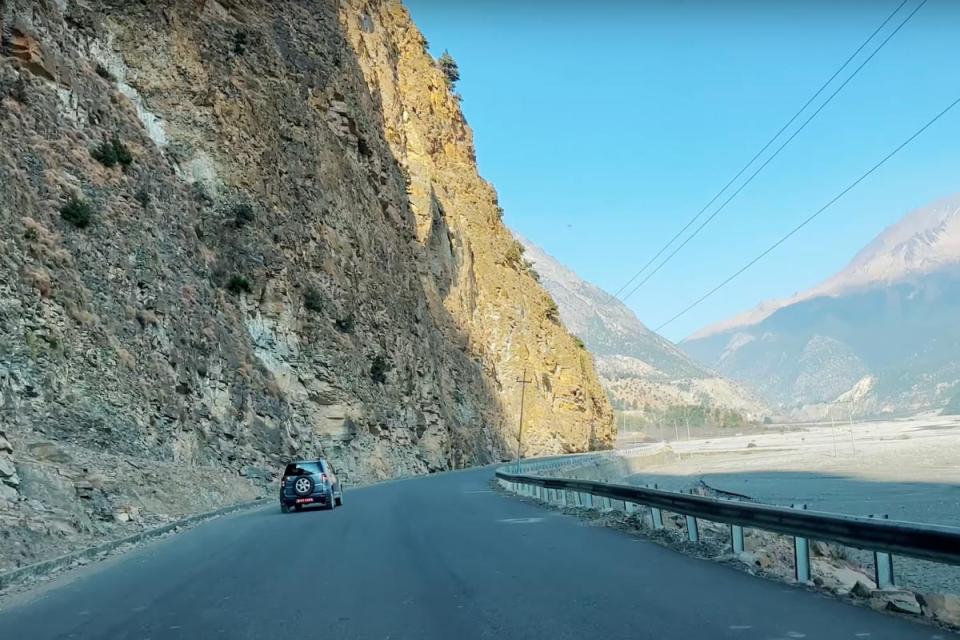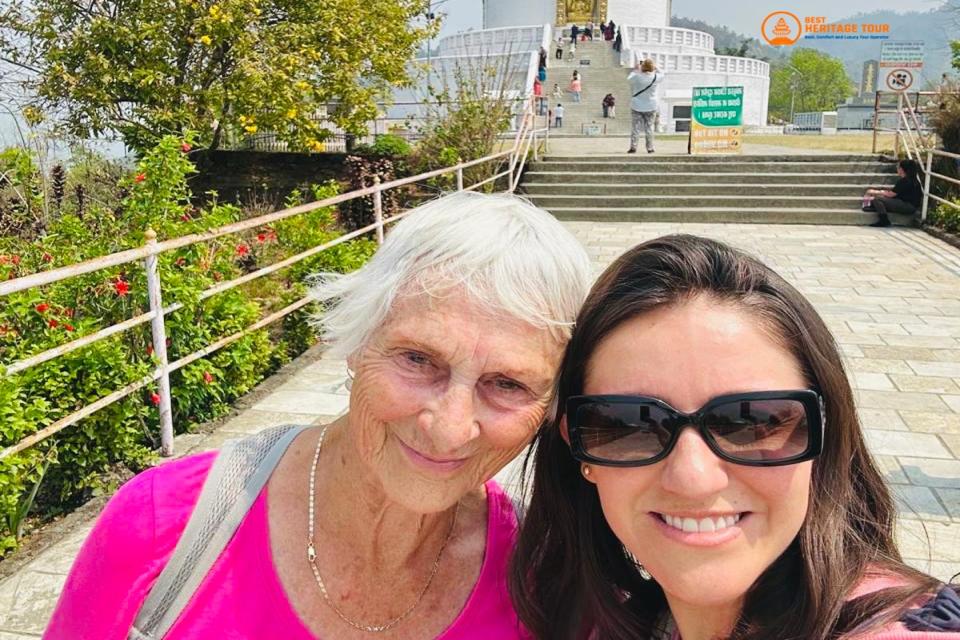Located at an altitude of 3,800 meters in the stunning trans-Himalayan region of Nepal, Muktinath Temple - also known as Muktidham Nepal - stands as one of the most revered pilgrimage destinations in South Asia. Set against the backdrop of the rugged Mustang landscape and the Annapurna mountain range, Muktinath is a sacred place where spiritual devotion, natural beauty, and cultural richness converge. The temple is uniquely venerated by both Hindus and Buddhists, making it a symbol of religious harmony. For Hindus, it is one of the 108 sacred Divya Desams, where Lord Vishnu is worshipped as Mukti Narayan. For Buddhists, the site is revered as Chumig Gyatsa, associated with the great Guru Rinpoche and Avalokiteshvara.
Pilgrims from India, Nepal, and across the world believe that a visit to Muktinath grants Moksha - liberation from the cycle of birth and rebirth. The temple complex features 108 sacred water spouts (Mukti Dharas) and twin bathing ponds (Mukti Kunda), where devotees perform ritual ablutions to wash away sins. The surrounding environment filled with fluttering prayer flags, chortens, and mountain serenity enhances the spiritual ambiance, making it a destination that not only fulfills religious duties but also offers inner peace and reflection. Trekkers and spiritual seekers alike are drawn to this high-altitude sanctuary for both devotion and discovery.
With growing religious tourism and major improvements in travel infrastructure - such as well-maintained roads, flight connectivity, and modern accommodations - 2026/27 is shaping up to be an ideal time to embark on your Muktinath Darsan. Whether you are a senior pilgrim seeking divine blessings, a Himalayan explorer in search of cultural depth, or a spiritual traveler hunger for meaningful experiences, this complete guide will walk you through everything you need to plan a smooth, comfortable, and transformative journey to Muktinath Temple.
The Spiritual Significance of Muktinath Temple
For Hindus
-
Muktinath is one of the 108 Divya Desams, sacred shrines dedicated to Lord Vishnu.
-
The presiding deity is Lord Vishnu, worshipped here as Sri Mukti Narayan.
-
According to Hindu mythology, this is the place where Lord Vishnu got salvation from the curse of Brinda (wife of Jalandhar).
-
Bathing in the 108 Mukti Dhara water spouts is believed to wash away sins and open the path to salvation.
For Buddhists
-
Muktinath is equally sacred to Tibetan Buddhists, who call it Chumig Gyatsa, meaning ‘Hundred Waters’.
-
The temple is associated with Avalokiteshvara (Chenrezig), the Bodhisattva of compassion.
-
The eternal flame burning in the temple is worshipped as a miraculous natural phenomenon and an element of Dakinis (goddesses).
Where is Muktinath Located?
Muktinath is located in the Mustang district of Nepal, close to the Tibetan plateau. It lies in the rain shadow of the Himalayas, making it accessible even during monsoons. The nearest major towns are:
-
Jomsom (24 km): The closest town to Muktinath, Jomsom acts as the main gateway for travelers and pilgrims. It has a small airport with regular flights from Pokhara and basic facilities for accommodation and supplies.
-
Pokhara (200+ km): Known as a popular tourist hub in Nepal, Pokhara offers scenic beauty and excellent transport connections. Most travelers begin their journey to Muktinath from here, either by flight to Jomsom or via jeep and trekking routes.
-
Kathmandu (375+ km): Nepal’s capital and international gateway, Kathmandu connects global travelers to the region. From here, visitors can take a domestic flight to Jomsom or embark on a long jeep ride toward Muktinath.
How to Reach Muktinath Temple in 2026/27?
There are multiple ways to reach Muktinath depending on your travel style, age, and preferences.
1. By Air (Fastest and Easiest)
-
Step 1: Fly from Kathmandu to Pokhara (about 25 minutes). Pokhara is Nepal’s gateway to the Annapurna region and offers frequent flights daily.
-
Step 2: Fly from Pokhara to Jomsom (around 20 minutes). This flight provides breathtaking aerial views of the Himalayan peaks and Mustang valley.
-
Step 3: Drive from Jomsom to Muktinath by jeep, which takes approximately 1.5 to 2 hours on a well-maintained mountain road.
Note: Flights to Jomsom are highly weather-dependent, especially during winter and monsoon seasons. Early morning flights are recommended to avoid cancellations due to fog or winds.
2. By Road (Ideal for Pilgrimage Groups and Families)
The Muktinath Jeep Tour is the most comfortable and practical option, especially for senior citizens and group travelers who prefer convenience over trekking.
-
Kathmandu → Pokhara: Drive from Kathmandu to Pokhara, which takes about 7 hours via a scenic highway passing through green hills and terraced fields.
-
Pokhara → Tatopani → Jomsom: Continue the journey from Pokhara to Jomsom by road, passing through beautiful towns like Beni, Tatopani, and Kalopani. This stretch is full of dramatic mountain views, winding rivers, and deep gorges.
-
Jomsom → Muktinath: From Jomsom, take a 4WD jeep to Muktinath. The jeep ride is adventurous and offers stunning panoramic landscapes.
3. By Trekking (For Adventure Seekers)
Muktinath is a significant stop on the famous Annapurna Circuit Trek, attracting trekkers seeking both spiritual fulfillment and physical challenge.
-
Trekkers typically reach Muktinath after crossing the Thorong La Pass at 5,416 meters, one of the highest trekking passes in the world.
-
This route is best suited for fit and experienced trekkers who want to combine pilgrimage with a Himalayan adventure. The trek provides a rare opportunity to explore remote mountain villages, diverse ecosystems, and ancient temples.
Best Time to Visit Muktinath Temple in 2026/27
Spring (March to May):
Spring is one of the best times to visit Muktinath. The weather is pleasant with clear blue skies and mild temperatures. Flowers bloom, and the surrounding landscape is lush and green. It’s an excellent season for temple visits and trekking.
Monsoon (June to August):
During monsoon, heavy rains hit much of Nepal, but Muktinath lies in the rain shadow of the Himalayas. Still, roads can become slippery and prone to landslides. Travel by road is often risky and trekking trails can be challenging. It’s generally advisable to avoid this season for the journey.
Autumn (September to November):
Autumn offers the most favorable weather conditions with stable skies and cool temperatures. Visibility of the Himalayan peaks is at its best, making it ideal for sightseeing and spiritual journeys. This is the most popular time for pilgrims and tourists alike.
Winter (December to February):
Winter brings cold temperatures and possible snowfall to Muktinath. Snow can close roads and limit accessibility. While not ideal for elderly travelers, the season offers a peaceful and serene atmosphere for those who are prepared for the cold. Adventure seekers may find this time spiritually rewarding.
Summary Table:
|
Season |
Months |
Weather Conditions |
Travel Notes |
|---|---|---|---|
|
Spring |
March to May |
Clear skies, blooming flowers |
Ideal for temple visit + trekking |
|
Monsoon |
June to August |
Risk of landslides |
Avoid road travel |
|
Autumn |
Sept to November |
Best weather, high visibility |
Most popular & recommended season |
|
Winter |
Dec to Feb |
Cold, possible snow closures |
Not ideal for elderly travelers |
Peak Season: April to June and September to November
Permit Requirements for Muktinath Yatra
If you’re not traveling with a registered tour operator like Best Heritage Tour, you’ll need the following permits:
For Foreigners:
-
ACAP (Annapurna Conservation Area Permit) - NPR 3,000
-
TIMS (Trekkers' Information Management System) - NPR 2,000
For Indian Citizens:
-
No visa is required to enter Nepal.
-
ID Required: Passport, Voter ID, or Aadhar card (with photo)
If you book with Best Heritage Tour, all permits and logistics are managed for you.
Muktinath Temple Complex: What to Expect
Main Shrine
The Muktinath Temple is beautifully built in the traditional pagoda style, featuring a stunning golden roof that gleams in the sunlight. Inside, it houses the sacred Shaligram stone, which is considered a divine form of Lord Vishnu. This unique combination highlights the temple’s significance not only to Hindus but also to Buddhists, symbolizing harmony between the two faiths.
108 Water Spouts (Mukti Dharas)
One of the temple’s most fascinating features is the row of 108 water spouts known as Mukti Dharas. These spouts continuously pour cold mountain water, and pilgrims from all over come to take ritual baths here. Bathing under each spout is believed to wash away sins and purify one’s karma, making it a deeply spiritual cleansing process for both Hindus and Buddhists.
Eternal Flame (Jwala Mai Temple)
Nearby is the Jwala Mai Temple, famous for its eternal flame that burns continuously over water and stone. This natural gas flame has been flickering for centuries and holds immense spiritual significance. It represents the eternal light of knowledge and the unity of the five elements, serving as a powerful symbol of life and spiritual awakening.
Mukti Kunda (Two Sacred Ponds)
Before entering the main shrine, devotees often take a holy dip in the two sacred ponds known as Mukti Kunda. These ponds are believed to cleanse both the body and soul, preparing pilgrims for their spiritual journey within the temple. The water here is considered highly purifying, enhancing the overall sanctity of the pilgrimage experience.
Accommodation Options Near Muktinath Temple
Jomsom
Jomsom is the closest town with a range of hotels and lodges offering comfortable stays. Most accommodations here provide hot showers, Wi-Fi, and on-site restaurants serving local and international cuisine. It’s a convenient base before heading to Muktinath or after your pilgrimage.
Ranipauwa
Ranipauwa is a small settlement very close to Muktinath Temple, known for its basic guesthouses. These lodges offer clean rooms with shared bathrooms and provide easy access to the temple complex. While facilities are simple, the proximity makes it popular for devotees wanting to stay near the shrine.
Tip: During peak seasons, last-minute bookings can be difficult. It’s best to plan in advance or let Best Heritage Tour handle your accommodations to ensure a hassle-free and comfortable stay throughout your journey.
Summary Table:
|
Place |
Type |
Facilities |
|---|---|---|
|
Jomsom |
Hotels, lodges |
Hot showers, Wi-Fi, restaurants |
|
Ranipauwa |
Basic guesthouses |
Near temple, clean rooms, shared bathrooms |
Travel Tips for Muktinath Darsan
-
Stay Hydrated: Altitude sickness can affect anyone.
-
Dress Modestly: Respect temple customs and dress conservatively.
-
Carry Cash: ATMs are unreliable beyond Pokhara.
-
Be Respectful: No photography inside the main temple.
-
Warm Clothes: Even in spring, the nights are cold.
Conclusion: Your Path to Moksha Begins Here
The journey to Muktinath Temple in 2026/27 is more than a religious obligation - it's an experience of inner peace, divine energy, and Himalayan grandeur. Whether you're looking to wash away sins, explore ancient Himalayan traditions, or just feel spiritually uplifted, Muktinath offers it all.
So why wait?
Book Your Muktinath Darsan Today with Best Heritage Tour
Website: www.bestheritagetour.com
Email: info@bestheritagetour.com / bestheritagetour@gmail.com
Call/WhatsApp: +977-9851149197
Office Location: Thamel Marg, Kathmandu Nepal
Let your 2026/27 pilgrimage be spiritually rewarding and logistically smoothwith Best Heritage Tour by your side.
Author: Best Heritage Tour
Date: 23rd July, 2025

